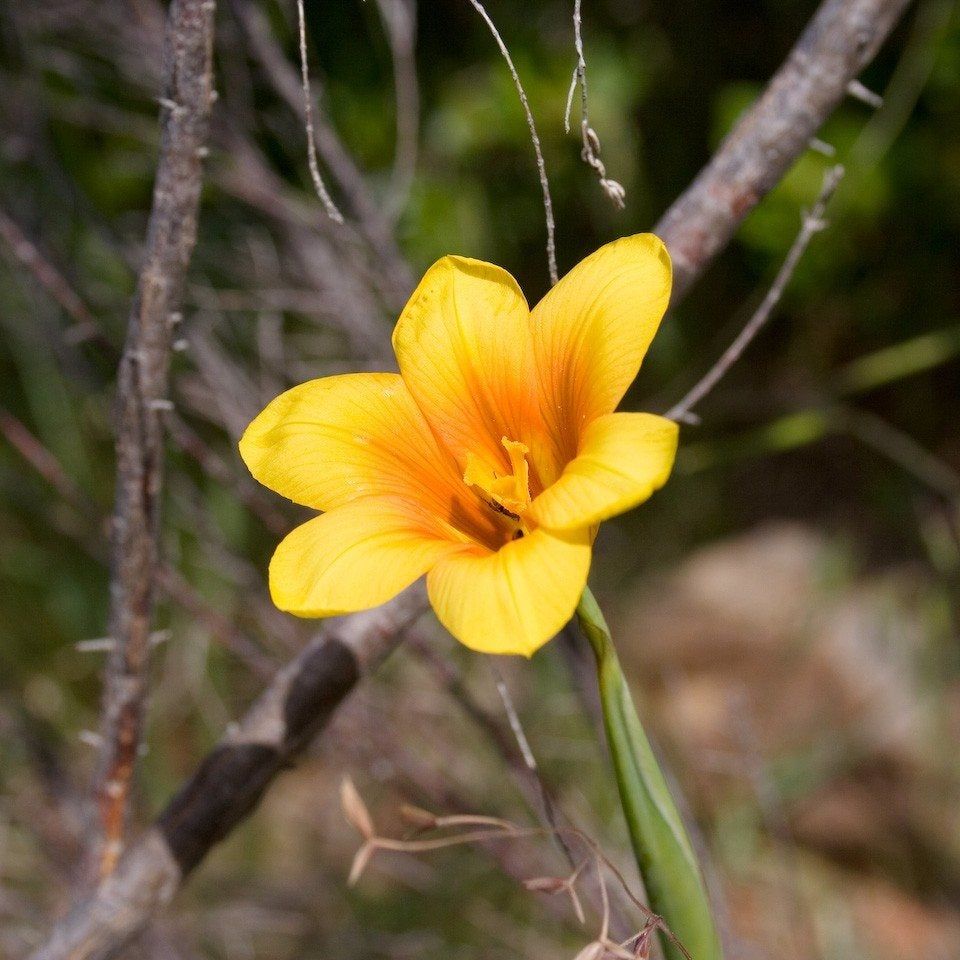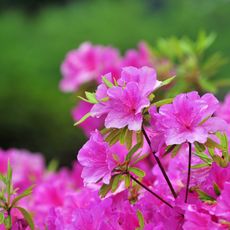Homeria Plant Info: Tips On Cape Tulip Care And Management


Homeria is a member of the iris family, although it more resembles a tulip. These stunning small flowers are also called Cape tulips and are a toxic threat to animals and humans. With care, however, you can enjoy these African native flowers which come in 32 different species. Homeria Cape tulips spread over time, bringing remarkable color and texture to the landscape. Cape tulip care is a breeze since plants have few pest or disease issues and they just keep on coming.
Homeria Plant Info
Everlasting beauty comes from growing Homeria bulbs. Cape tulip plants are perennials with strappy leaves and flowers in hues of salmon, orange, white, yellow, lilac, and pink. Homeria Cape tulips are easy to grow but can be difficult to manage due to their prolific spread, especially in warm, dry climates like their native South African Cape. Many gardeners might think they are growing Homeria bulbs, but they are actually growing Cape tulip corms. Bulbs and corms are two different forms of storage organs produced by plants. The plants can grow up to 2 feet (61 cm.) in height and have slender, grass-like leaves. The six petaled blooms are richly colored and often have a second tone in the center. An important bit of Homeria plant info is its toxicity. The plant is reportedly dangerous to livestock and humans if ingested. The rapid spread of the plant can make it difficult to control if it escapes into grazing land. Corms and seeds transfer easily on boots, clothing, farm equipment, and even animals. These establish quickly.
Cape Tulip Care
Homeria should be grown in full sun in well-drained soil. Install corms 1 to 2 inches (2.5-5 cm.) deep in fall or spring. A good bulb food can be incorporated into the holes. The foliage will die back in fall and can be cut after it yellows. Corms in cool northern or temperate climates will need lifting for winter. Store them in a dry cool location until spring and then replant the corms. The plants have no significant pest or disease issues, although the leaves can get rust fungus. Divide the clumps every two to three years and weed out any corms that are becoming invasive.
Controlling Homeria Cape Tulips
Most of us will just enjoy the season long display of blooms, but in agricultural and farming communities, control of the plant is essential to prevent animal death. In such areas, it is best to clean all machinery and foot gear after going out in the field to prevent spreading the plants. Tilling can be effective over time. Hand pulling is possible but time consuming in large properties. It may be best to use an herbicide labeled for the control of corm bearing plants. Unless you live in an area where animals or children might snack on the plant, it is best to just view these poisonous plants as eye candy and be vigilant about young and furry visitors.
Gardening tips, videos, info and more delivered right to your inbox!
Sign up for the Gardening Know How newsletter today and receive a free copy of our e-book "How to Grow Delicious Tomatoes".

Bonnie Grant is a professional landscaper with a Certification in Urban Gardening. She has been gardening and writing for 15 years. A former professional chef, she has a passion for edible landscaping.
-
 Ideal Azalea Water Requirements – For Lush, Healthy Shrubs That Will Thrive For Years
Ideal Azalea Water Requirements – For Lush, Healthy Shrubs That Will Thrive For YearsWhat are an azalea's water requirements? Learn how to keep these beautiful spring-blooming shrubs happy and healthy in your yard or container garden.
By Amy Grant
-
 7 Vegetables To Plant In April: Start Indoors Or Outside For A Bumper Summer Harvest
7 Vegetables To Plant In April: Start Indoors Or Outside For A Bumper Summer HarvestAchieve your growing ambitions with these best vegetables to plant in April – including cold-hardy crops to sow direct and tender varieties to start indoors
By Mary Ellen Ellis